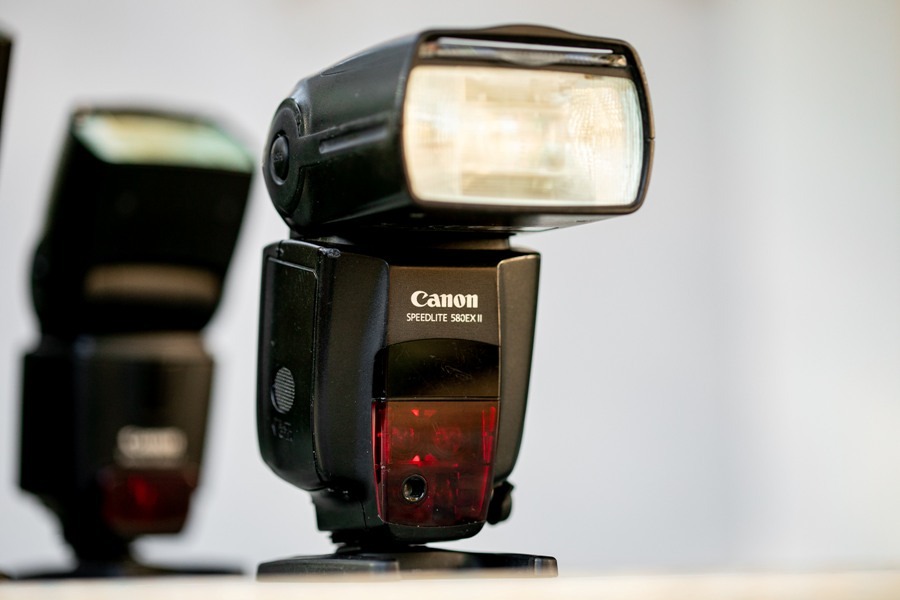
As an Amazon Associate we earn from qualifying purchases.
With its Guide Number at only 3.66 feet, the built-in flash for the Canon 70D limits your ability to take well-lit photographs. Getting an external flash that offers more features such as tilting and TTL enables you to fully exploit the 70D’s capabilities. In this review, we’ll help you identify the best flash for Canon 70D that can help you make the most out of this camera.
Quick Navigation
An excellent flash for your Canon 70D offers you several benefits including, better illumination, and ease of use. Here is a look into the pros and shortcomings of the best flashes for your Canon 70D.
As expected at this price point, the Yongnuo YN24EX comes with durable construction. The battery compartment is solid and appears sturdier than what is on the Godox TT600.
Given it is a ring flash, the unit is excellent for close-up, and macro
Although it is not the most flexible flash, it adjusts through 90 degrees vertically and a similar range horizontally to enable you to bounce the light.
One of my biggest dislikes with the YONGNUO YN24EX is that it takes a bit longer to attach it than the other flashes on review. It also has a two-by-two battery compartment which tends to overheat faster than the linear, organized ones.
The unit features the lowest guide number amongst my options. It can only expose subjects as far as 7.32 feet at the maximum performance, fewer than the Godox TT600.
Although this may be inadequate for open-space shoots at night, the flash is suitable for lighting almost all indoor spaces.
I review all of the best Yongnuo flashes for Canon's in my detailed guide.
If you desire affordable and effortless off-camera
Thanks to the TTL settings, the flash can automatically calculate the most probable lighting intensity during busy sessions. The unit also provides you with High-Speed Sync (HSS) allowing you to use faster shutter speeds.
Its extensive Guide Number is another reason I liked this flash. Unlike my best flash for Canon 70D at 7.32 feet, this unit can illuminate objects up to 10.98 feet at ISO 100. It may be more suitable for capturing photos in instances with restricted movement.
With this flash, you get a more advanced tilting range than the YONGNUO YN24EX. Vertical adjustability is through -7 to 90 degrees while sideways tilting peaks at 270-degrees for added positioning capacity.
Unlike other options on my list, it comes with a trigger. You can appropriately position your flash off-camera to get the most suitable lighting conditions for your shoots. While the trigger is an excellent addition, you will have to sacrifice TTL and HSS if you plan to use it.
At only 9.45 ounces, the Neewer TT560 is my second lightest flash after the Altura Photo AP-305C at 7.0 ounces. It hardly makes a noticeable difference once combined with your Canon 70D, making it excellent for extended shoots.
Though not as excellent as other options in my review, its performance makes it a solid, affordable flash for Canon 70D.
Another of its strong points is the higher GN value compared to our first two options. Able to illuminate objects 11.58 feet away at ISO 100, this powerful unit is better suited for taking pictures of subjects who are further from the camera at full power.
Its horizontal tilting range is similar to the Altura Photo AP-305C at 270 degrees. Although its vertical range is slightly lesser at 0-90 degrees, it still offers more adjustability overall than the YONGNUO YN24EX.
The recycle speed is similar to YONGNUO YN24EX at five seconds at its most robust operation. It isn’t the fastest level around but works fine for landscape and real estate
The Godox TT600 is suited for you if you want a flash for fast-action
One of its most outstanding attributes, however, is the extended illumination distance. Its GN at 18.29 feet at ISO 100 offers the most extensive range on my list. In instances with limited maneuverability around the subject, this range allows you to illuminate the subject at full power when standing afar.
The unit further boasts of the most extensive adjustability on my list. It can rotate in all directions horizontally, whereas vertical rotation is like the Altura Photo AP-305C. Given its extended flexibility, you have more range to select suitable positioning.
Compatible with a trigger sold separately, the flash supports off-camera usage to give you more room to determine where lighting is best.
HSS-compatibility gives you an added feature crucial for using fast shutter speeds. The main issue is the absence of HSS itself when using the hot shoe.
While almost resembling the third version, the Yongnuo YN560 IV comes with a few modifications, with the most important being YN560-TX support.
If you seek a flash for Canon 70D capable of extensive illumination, the YONGNUO YN560 IV is another top option for consideration. It has a GN of 17.68 feet at ISO 100, making it my second best flash for Canon 70D in terms of illumination distance.
The YONGNUO YN560 IV proves to have many seconds, with its recycling time being three seconds at full power. It is an excellent option for a quick shooting despite lacking TLL and its accompanying attributes like HSS.
The YONGNUO YN560 IV comes with an impressive build. It, however, is the second heaviest flash in my review after the YONGNUO YN24EX and may lead to faster hand fatigue than lighter options.
It does not support TTL function, although the LCD is effortlessly legible, and it has an easy-to-use interface. Given TTL has little importance in still
As a real estate photographer, you might be unable to take bright interior photos due to the low performance of the Canon 70D APS-C sensor in poor lighting. Although this camera comes with a built-in flash that you can use to illuminate subjects, it might create hard shadows.
Fortunately, the following features can help you choose a flexible flash you can use to bounce off the light. The table below provides an outline of the key features to consider when buying the flash.
| Flashes | Guide Number | Zoom Range | Battery |
|---|---|---|---|
| Yongnuo YN24EX | 85’ at ISO 100 or 79’ at ISO 100 | 52mm, 58mm, 67mm and 72mm | 4 AA |
| Altura photo AP-305C | 36m/157ft. at ISO 100 | 24-105mm | 2 AA |
| Neewer TT560 | 125' at ISO 100 | 24-200mm | CR2025 |
| Godox TT600 | 190’ at ISO 100 and 200mm | 24-200mm | 4 AA |
| Yongnuo YN560 IV | 190’ at ISO 100 and 105mm | 24-105mm | 4 AA |
The guide number in a camera flash is generally a measure of how far the flash can sufficiently illuminate under a certain aperture and ISO settings. In cameras, the aperture is the opening that controls how much light will reach the camera sensor, and ISO is the sensitivity of the sensor to light.
Since these two settings affect how bright the photos can be, the guide number of the flash is subject to their variations. For uniformity, the guide number is indicated at a certain ISO, usually the base ISO. This makes the guide number equation to be: GN= distance (meters) x aperture (f-number).
Generally, a flash with a higher guide number, such as the Neewer TT560, means it can illuminate subjects further away compared to its counterparts. Usually, a flash with a higher guide number is preferable as it gives you more flexibility on the subject distances you can shoot from.
Like any other camera equipment, flashes come in varying construction qualities and specifications that affect their overall size and weight. If you are moving from one property to another, taking interior photos, you will need a compact and lightweight flash that won't exhaust you.
In most cases, a compact and lightweight flash can become a part of your
If portability is a major consideration, go for a lightweight flash such as the Altura Photo AP-305C.
TTL is an abbreviation of Through The Lens, which is a measure of how much light is passing through the camera lens. This technique helps to eliminate the hassle of setting the camera power manually. Generally, there are higher chances of overexposing or underexposing the scene when using the manual mode.
With TTL, the camera flash makes an initial flash that generally gathers information pertaining to light and subject distance. The flash is then able to determine how much power it needs to illuminate that subject at that distance and ambient light.
A flash with TTL support, such as the Yongnuo YN24EX, fires a preflash shortly before the camera shutter and then fires the actual flash with the right power when the camera shutter opens to take the actual shot. This allows you to take correctly-exposed photos without manually setting the power of the flash.
Godox flash is superior to both Neewer and Yongnuo flash as it comes with full compatibility with most camera models, which makes it easier to create intricate lighting setups. Additionally, the Godox flash has a lower rotation cycle compared to that of Neewer and Yongnuo.
Not all Yongnuo flashes are compatible with Canon 70D, and you need to carefully check the camera and flash specifications before you purchase. This is because a camera’s hot shoe is designed to be compatible with specific flashes.
A guide number determines the power of a Speedlight or a built-in flash. You can get the guide number by multiplying the camera-to-subject distance and the aperture of the lens used. In most flashes, this distance is given in feet or meters.

Any of these flashes I reviewed, will give you a more powerful flash than what you get with the built-in flash on the Canon 70D. Swapping the substandard performance of the inbuilt flash with one of them ensures better subject illumination. You can also read my review on the best lenses for the Canon 70D.
